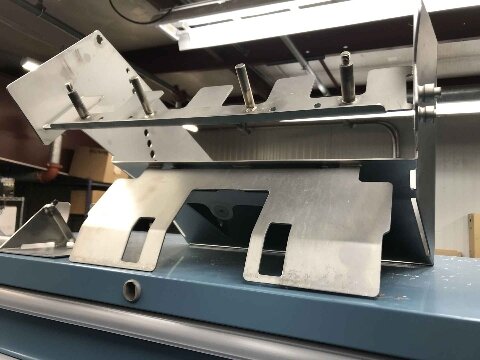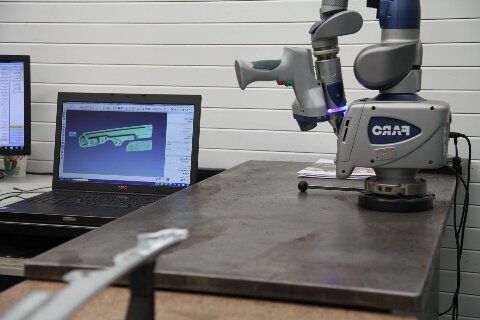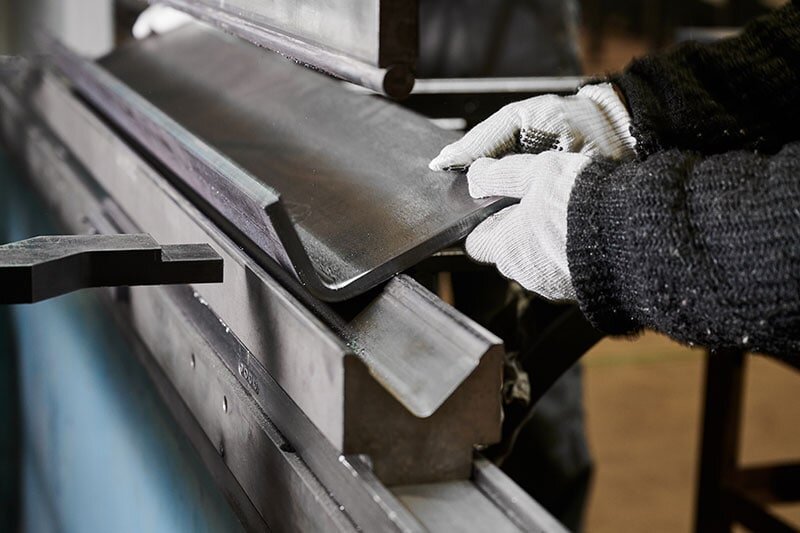Many industries need metal surfaces that stay visible in dark or low-light environments. But standard coatings often fade, rust, or fail to reflect light. This creates safety risks and limits product use. Reflective paint offers a better solution. It boosts visibility, resists wear, and extends the life of metal parts.
This paint can do more than look bright. It helps reduce accidents, enhances visibility at night, and makes equipment stand out when it matters. Want to know how it works and where to use it? Let’s break it down.
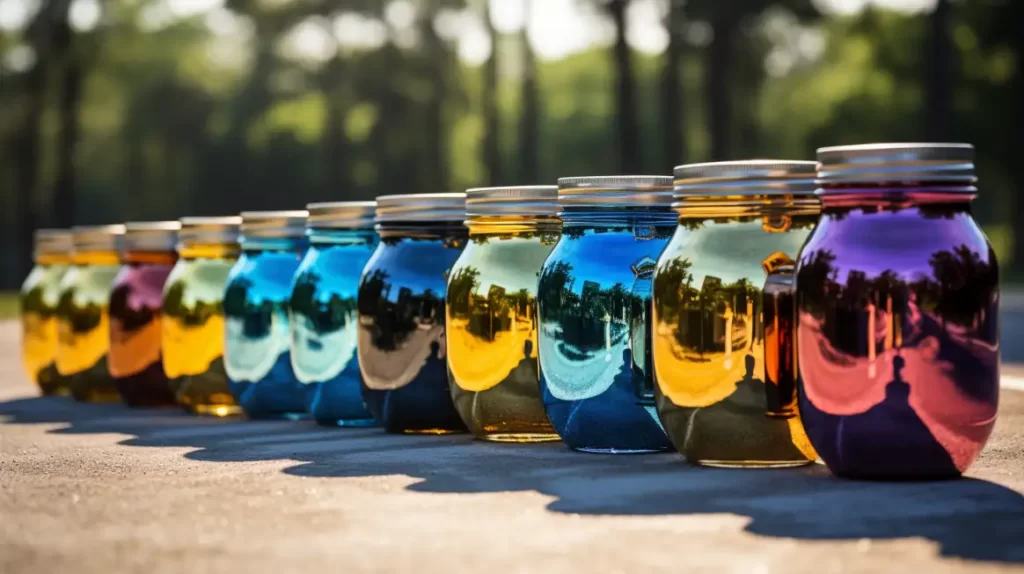
What is Reflective Paint for Metal?
Reflective paint for metal is a special coating that reflects light. It contains small reflective beads—often made of glass or similar materials. These beads catch and bounce light back toward their source.
This paint is usually applied in thin layers over a primed metal surface. When light hits the painted surface, the embedded beads scatter the light and reflect it. The effect is especially strong at night or in dim areas.
It’s common in road signs, safety barriers, heavy equipment, and warehouse structures. Anywhere visibility matters, this paint can help.
The Science Behind Reflectivity
Reflective paint works through simple light physics. It reflects light instead of absorbing it, making metal surfaces easier to see in dark or harsh settings.
How Reflective Pigments Work?
Reflective pigments are not like regular color pigments. Instead of changing the color of light, they return it. These pigments include tiny glass beads or prismatic crystals. When light hits the bead, it bends and reflects to the source.
The round shape of the bead helps direct light more efficiently. The smoother and cleaner the surface, the better the reflection.
The size and quality of the bead affect the strength of the reflection. Smaller beads give more detailed results, while larger ones give stronger reflections.
The Role of Binder and Additives
Pigments alone can’t stick to metal. That’s where binders come in. Binders are the glue in the paint. They hold the beads in place and help the paint stick to the surface.
Common binders include acrylic, epoxy, or polyurethane. These materials also protect the paint from weather and wear.
Additives are mixed in to improve drying time, thickness, or resistance to fading. Some even prevent the paint from sagging or peeling under heat or water.
Light Reflection vs. Light Absorption
Regular paint absorbs some light. That’s why you don’t see a glow when headlights hit it.
Reflective paint does the opposite. It reflects most of the light to the source. This difference is what makes metal coated in reflective paint much more visible in low light.
Light reflection keeps the surface visible. Light absorption hides it. That’s why reflective paint is a better choice for safety and visibility.
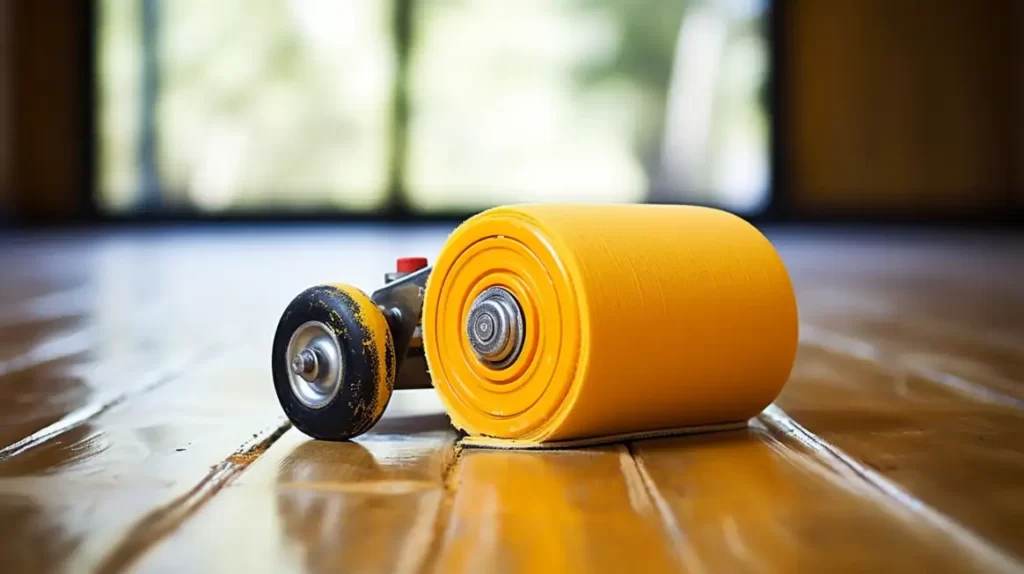
Types of Reflective Paint for Metal
Different jobs need different paint. Reflective paints come in a few types. Each has its use, strength, and drying process.
Water-Based Reflective Paint
Water-based paint is low-odor and safer for indoor use. It dries fast and is easier to clean up. This type is good for light-duty jobs or indoor metal parts.
It’s also more eco-friendly. But it may not hold up as long in harsh weather or on heavy equipment.
Solvent-Based Reflective Paint
Solvent-based paint uses chemicals like xylene or toluene. It’s stronger and lasts longer outdoors. This paint handles rain, sun, and temperature swings well.
It sticks to metal better than water-based types. But it smells stronger and needs good airflow during use.
Epoxy-Based Reflective Paint
Epoxy paints are tough. They resist scratches, heat, and moisture. That makes them perfect for heavy-duty use on machinery or metal parts exposed to harsh conditions.
This type also bonds well with rough or oily metal. However, epoxy can be harder to apply and takes longer to cure.
Acrylic-Based Reflective Paint
Acrylic reflective paint is flexible and dries fast. It works well for general use. It offers good shine and decent durability.
It doesn’t yellow much over time and is easy to touch up. It’s a solid choice for signs, tools, or light-duty gear.
Factors To Consider When Choosing Reflective Paint For Metal
Picking the right reflective paint depends on your project needs. Each factor affects how well the paint performs and how long it lasts.
Reflectivity & Brightness
The main job of reflective paint is to reflect light. Check how bright the paint is under headlights or work lights. Some paints reflect better from longer distances.
Brightness depends on the type and amount of reflective beads in the mix. Choose high-reflectivity paint for traffic signs, safety gear, or night use.
Metal Surface Compatibility
Not all paints stick well to every metal. Some metals, like aluminum or stainless steel, may need a primer. Make sure the paint you choose matches the surface you’re coating.
Look for paints that list good adhesion to the type of metal you are working with.
Durability & Weather Resistance
Outdoor or industrial metal needs strong protection. Pick a paint that resists UV light, moisture, and temperature swings. Epoxy and solvent-based paints work better for these jobs.
Indoor use may not need the same level of resistance.
Application Method
Some paints are easier to spray. Others work better with brushes or rollers. Choose based on the tools you have and the shape of the metal parts.
Spray options cover large or uneven surfaces faster and more evenly.
Color & Finish Options
Reflective paint often comes in white, silver, or yellow. Some offer custom colors. Finish options include gloss, semi-gloss, or matte.
Pick a finish that matches the function. Gloss is best for strong light return. Matte hides wear better.
Cost
Prices vary based on brand, quality, and quantity. High-reflectivity paints cost more but perform better in critical applications. Think about long-term value. A cheaper paint may wear out fast and need reapplication. Compare the total cost, not just the sticker price.
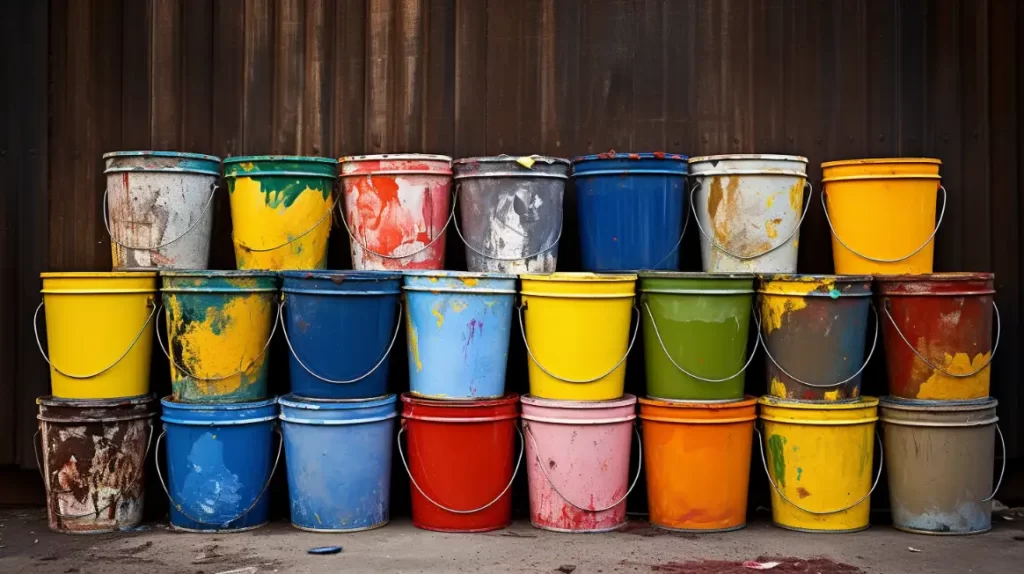
Material Compatibility
Metal type and surface condition both affect how well reflective paint performs. Some metals are easier to coat, while others need special prep steps.
Which Metals Work Best with Reflective Paint?
Reflective paint works well on many metals. Steel, aluminum, and iron are the most common. These materials accept coatings well, especially when properly prepared.
Steel gives a strong bond and long wear. Aluminum reflects well but needs more prep. Iron is rougher and holds paint longer when sealed.
Paint may not perform as well on very smooth or oily metals without extra prep.
Surface Preparation for Optimal Bonding
Good surface prep is key. Start by cleaning off oil, dirt, and rust. Use a degreaser or mild acid cleaner if needed.
Then, roughen the surface. Sandblasting or using abrasive pads helps the paint grip. For glossy metal, sanding is a must.
After that, apply a primer made of metal. This improves adhesion and helps the paint last longer.
Skip these steps, and the paint may peel, flake, or wear too soon.
Coating Galvanized, Aluminum, and Stainless Steel
Each of these metals needs special care:
- Galvanized Steel: This metal has a zinc coating that resists paint. Use a self-etching primer or zinc-specific primer to bond the paint.
- Aluminum: Clean well and use an aluminum primer. This helps the reflective paint stick without peeling.
- Stainless Steel: It’s smooth and non-porous. Sand it first, then apply a primer made of stainless steel before painting.
Application Methods
How you apply reflective paint affects how it looks and lasts. Some methods are better for small jobs, others for speed or surface detail.
Brush and Roller Application
Brushing or rolling is simple and needs no special tools. It works best on flat or small metal parts. You can control the paint thickness and fix small mistakes easily.
Use a high-quality brush or foam roller to avoid streaks. Apply thin, even coats. Let each coat dry fully before adding another.
This method takes longer and may not work well on large or complex shapes.
Spray Techniques for Even Coating
Spraying gives a smoother, more even finish. It covers curves and edges better. It’s faster for big parts or batches.
Use an airless or HVLP spray gun for best results. Make sure to thin the paint if needed. Keep the spray distance and angle steady.
Spraying needs good airflow and protective gear. It can waste more paint than brushing, but the finish is cleaner.
Powder Coating with Reflective Additives
Powder coating is a dry process. It uses an electric charge to bond powder to the metal. After that, the part is baked in an oven. The heat melts the powder into a smooth, hard coat.
Some powders include reflective particles. These create a strong, light-returning surface. It’s very tough and resists wear, heat, and chemicals.
This method needs special tools and ovens, so it’s used in large-scale or high-performance projects.
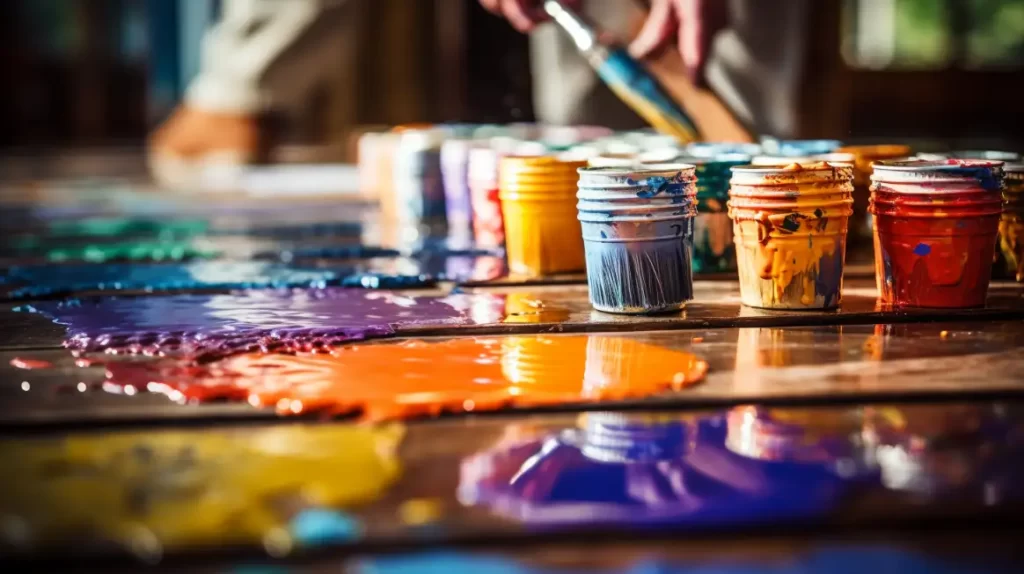
Industrial and Commercial Uses
Reflective paint isn’t just for signs. It’s used across many industries to improve safety, visibility, and product performance in daily operations.
Reflective Paint in HVAC and Roofing
HVAC units and metal roofs can reflect heat and light with the right coating. Reflective paint helps reduce heat buildup, improving energy efficiency.
It also makes rooftop units easier to see, which lowers the chance of accidental damage during maintenance.
Applications in Automotive and Transportation
Reflective paint improves safety on trucks, trailers, and heavy machinery. It outlines shapes, edges, or key zones that must stay visible in dark or poor weather.
It’s often applied to bumpers, door frames, and step areas. In the rail and marine sectors, it marks access points and safety zones clearly.
Use in Warehouses, Storage Units, and Outdoor Equipment
In busy warehouses, reflective paint highlights hazards or walkways. It marks forklift lanes, guardrails, or loading docks.
On storage units, it boosts visibility during early or late hours. On outdoor machines, it helps operators avoid collisions or errors.
Signage and Traffic Safety
This is where reflective paint sees the most use. Road signs, parking markers, barriers, and warning posts all rely on it.
At night or in fog, reflective paint makes signs pop out under headlights. It’s key to safe roads, work zones, and facility entrances.
Solar Panels
Reflective paint is applied to the infrastructure surrounding solar panels, designed to absorb light rather than reflect it. You can use this paint on mounts and the back of the boards to reduce heat. This will improve the efficiency of solar energy systems.

Reflective Paint for Metal: Cleaning and Maintenance Tips
To keep reflective paint working well, it needs regular care. Good maintenance keeps it bright, clean, and long-lasting.
Regular Cleaning
Dirt and grime can block light. Wash the painted surface with mild soap and water. Use a soft brush or cloth. Avoid harsh chemicals or rough scrubbing.
Clean every few months, or more often, in dusty or oily areas.
Preventing Damage
Avoid dragging sharp tools or equipment across painted surfaces. Place guards or barriers if the surface is in a high-traffic zone.
Use padding or covers during transport to prevent scratches or chips.
Inspecting for Wear & Damage
Check the paint every few months. Look for cracks, peeling, or faded spots. Pay close attention to corners and edges.
Early damage is easier to fix. Left alone, it can spread and cause the paint to fail.
Touch-Up & Reapplication
If the paint is chipped or faded, sand the damaged spot lightly. Clean it well. Then, reapply the same type of reflective paint.
Let it dry fully before use. For large areas, consider recoating the whole surface for a consistent look.
Protecting Against Environmental Damage
UV rays, salt spray, and rain can wear paint faster. In harsh settings, apply a clear topcoat made of metal. It adds extra protection.
In coastal or chemical-heavy areas, check surfaces more often and use stronger coatings if needed.
Conclusion
Reflective paint for metal helps make metal parts easier to see. It works by using small particles that reflect light back to where it came from. This helps improve safety and visibility in dark or busy places. You can use it on steel, aluminum, galvanized, or stainless steel surfaces. With the right prep and paint type, it sticks well and lasts a long time.
Want to improve safety or visibility in your next metal project? Contact us to explore the right reflective coating solution tailored to your needs.
Hey, I'm Kevin Lee

For the past 10 years, I’ve been immersed in various forms of sheet metal fabrication, sharing cool insights here from my experiences across diverse workshops.
Get in touch

Kevin Lee
I have over ten years of professional experience in sheet metal fabrication, specializing in laser cutting, bending, welding, and surface treatment techniques. As the Technical Director at Shengen, I am committed to solving complex manufacturing challenges and driving innovation and quality in each project.

